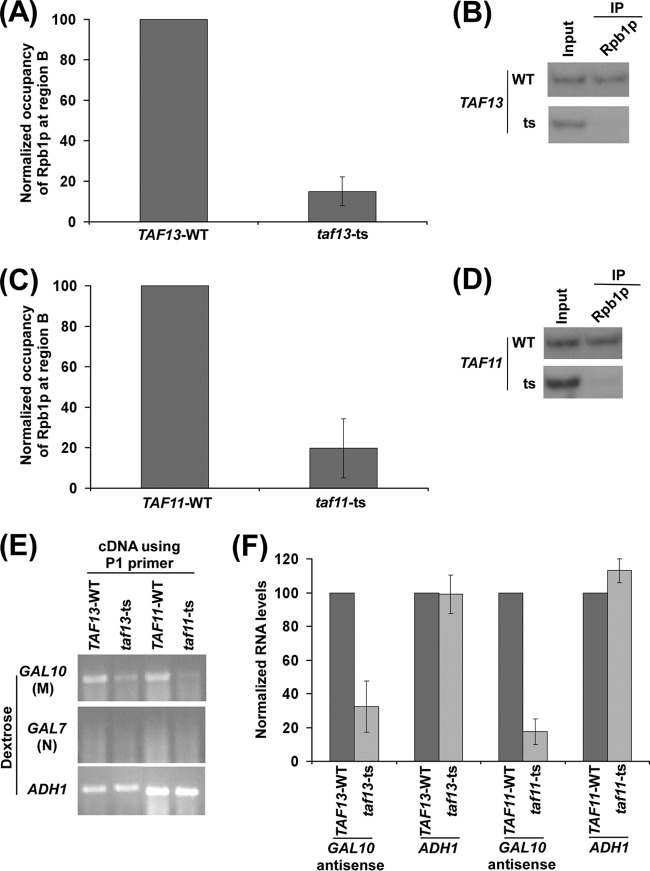Fig 7.
Analysis of recruitment of antisense RNA polymerase II to the 3′ end of the GAL10 coding sequence in the wild-type and mutant strains of TAF11p and TAF13p in dextrose-containing growth medium for antisense transcription. (A) TAF13p is required for recruitment of RNA polymerase II to the 3′ end of the GAL10 coding sequence in dextrose-containing growth medium. Both the wild-type and mutant strains were grown, cross-linked, and immunoprecipitated as described in the legend of Fig. 6A. (B) Autoradiograms for the ChIP data shown in panel A. (C) TAF11p is required for recruitment of RNA polymerase II to the 3′ end of the GAL10 coding sequence in dextrose-containing growth medium. Both the wild-type and mutant strains were grown, cross-linked, and immunoprecipitated as described in the legend of Fig. 6A. (D) Autoradiograms for the ChIP data shown in panel C. (E) RT-PCR analysis of GAL10 antisense transcription in the taf11-ts and taf13-ts mutant strains and their wild-type equivalents in dextrose-containing growth medium as described in the legend of Fig. 2B. Yeast cells were grown as described in the legend of Fig. 6A. (F) The data in panel E were plotted in the form of a histogram. The PCR signal of GAL10 antisense transcript in the wild-type strain was set to 100, and the level of GAL10 antisense transcript in the mutant strain was normalized with respect to 100. Likewise, the ADH1 transcript level was set to 100 in the wild-type strain, and the level of ADH1 transcript in the mutant strain was normalized with respect to 100.

